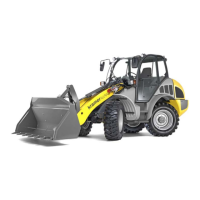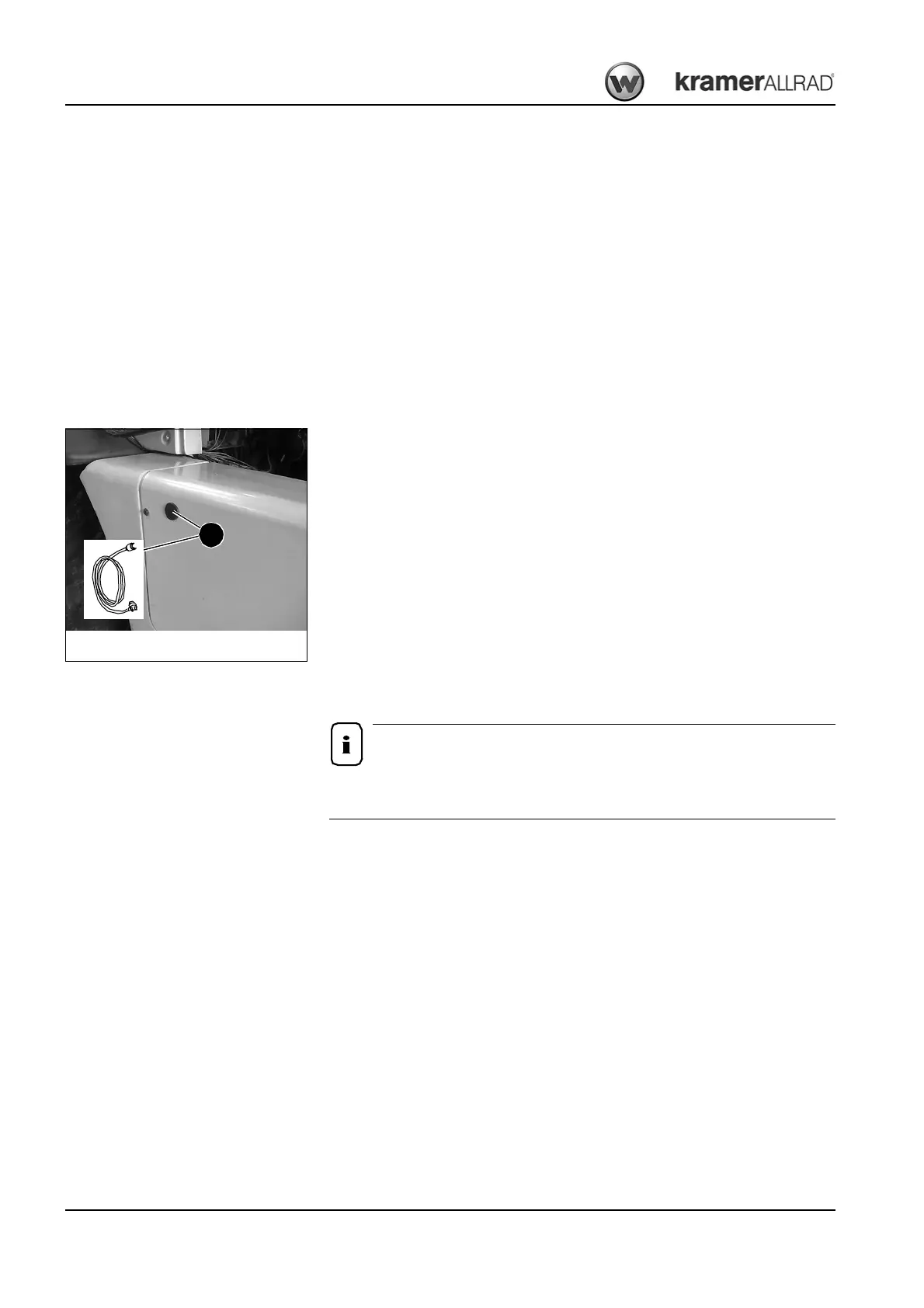3-24 BA 35101/02/03 EN – Edition 1.0 * 35101_02_03b330.fm
Operation
3.15 Oil and fuel preheater (option)
General information on the oil and fuel preheater
• Connect the oil and fuel preheater only to an earthed socket
• Check the connecting cable regularly for damage
• Replace a damaged cable by a new one immediately
• The heating element can be damaged:
• if the oil and fuel preheater is connected to intermittent or pulsating voltage
• if dirty or not enough coolant is used
• if the cooling system is not bled
• if a radiator repair compound is used
Oil preheater operation
The engine and hydraulic oil is heated by means of heating elements with a capacity of
750 W in the engine oil pan and in the hydraulic oil tank, according to the gravity principle
(warm oil rises and is replaced by cold oil). The oil can only be thoroughly warmed up to
operating temperature if the oil preheater is connected over a longer period of time – pref-
erably over night.
The machine socket is located at the rear right in the cover plate of the counterweight.
☞ Put the oil preheater into operation
• Park the machine near a 220 V socket
• First connect the special cable with the machine socket, then insert the plug into the
220 V (110 V) socket
☞ Before starting the engine:
• Remove the plug from the 220 V (110 V) socket
• Unplug the special cable from the machine socket
• Close the machine socket with a protective cap
The oil preheater (option) reduces pollutant emissions during the warm-up phase
by up to 60 %, saving fuel at the same time.
Fuel preheater
The fuel preheater prevents paraffin crystals forming, which otherwise clog the fuel filter at
low temperatures.
A temperature switch automatically switches on a heating element in the fuel line between
the tank and the fuel prefilter when ignition is switched on at temperatures below + 10 °C.

